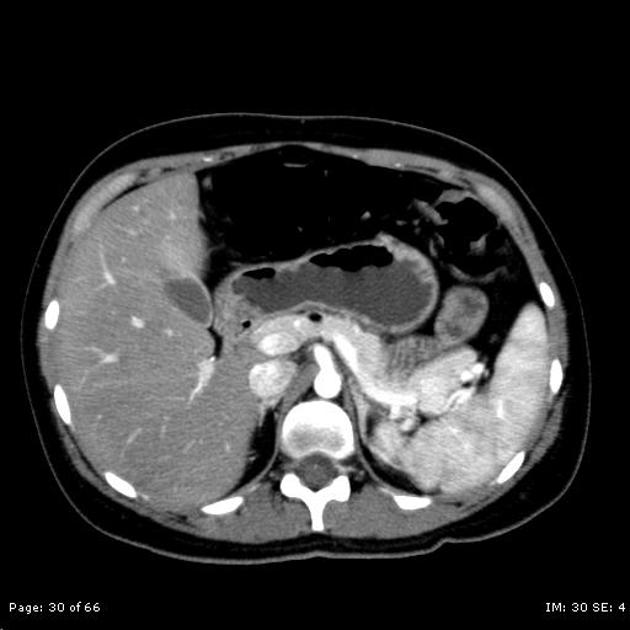Hypoglycemia CT
|
Hypoglycemia Microchapters |
|
Diagnosis |
|---|
|
Treatment |
|
Case Studies |
|
Hypoglycemia CT On the Web |
|
American Roentgen Ray Society Images of Hypoglycemia CT |
Editor-In-Chief: C. Michael Gibson, M.S., M.D. [1] Associate Editor(s)-in-Chief: Mohammed Abdelwahed M.D[2]
Overview
CT scan can be used for diagnosing insulinoma and islet-cell hypertrophy. Currently, with the advances in technology. The sensitivity has risen to 80% and 94.4% for helical CT scan with dual-phase multidetector CT scan. Insulinoma is hypervascular and CT shows greater enhancement than rest of the pancreatic parenchyma. It can appear, atypically, hypovascular and hypodense lesions after the administration of contrast.
CT
- Hypoglycemia caused by endogenous insulin the differential diagnosis includes insulinoma and islet-cell hypertrophy.
- Ultrasound, Computed tomography, and MRI can differentiate between both.[1]
- The sensitivity of CT scan for diagnosing insulinoma has increased to 80%.[1]
- A negative imaging study does not exclude insulinoma and patient need more tests.
- Findings on CT scan suggestive of insulinoma include:[1]
- CT shows hyperattenuating on arterial phase so arterial or pancreatic phase imaging may aid in better detection. Some may show calcification.[2]
- Greater degree of enhancement than parenchyma of the rest of pancreas (as its hypervascular) during the vascular phases of the contrast
- Most insulinomas are smaller, <1.3 cm (50%) and many of these are non-contour forming. Therefore, CT scan is less effective in diagnosing them than MRI.[2][3]
- It can appear hypovascular and hypodense lesions after the administration of contrast.2][3][2][4]

References
- ↑ Noone TC, Hosey J, Firat Z, Semelka RC (2005). "Imaging and localization of islet-cell tumours of the pancreas on CT and MRI". Best Pract Res Clin Endocrinol Metab. 19 (2): 195–211. doi:10.1016/j.beem.2004.11.013. PMID 15763695.
- ↑ King AD, Ko GT, Yeung VT, Chow CC, Griffith J, Cockram CS (1998). "Dual phase spiral CT in the detection of small insulinomas of the pancreas". Br J Radiol. 71 (841): 20–3. doi:10.1259/bjr.71.841.9534694. PMID 9534694.